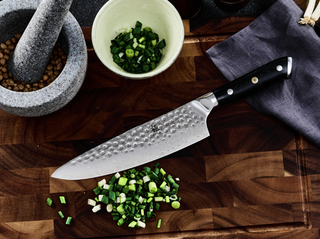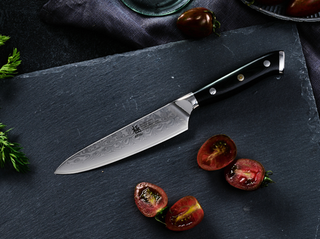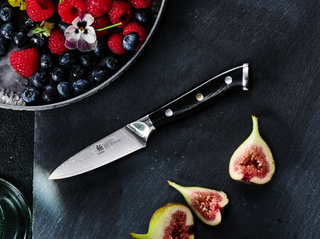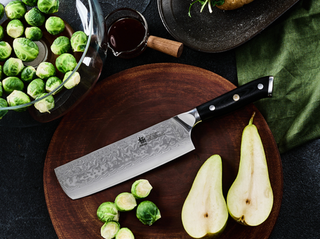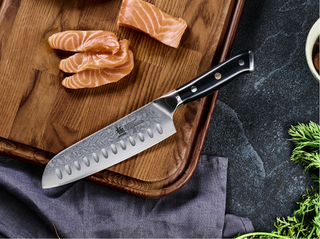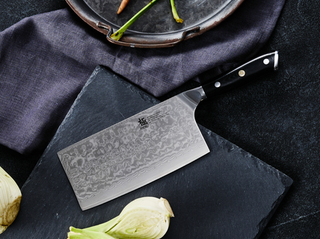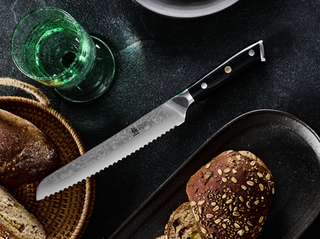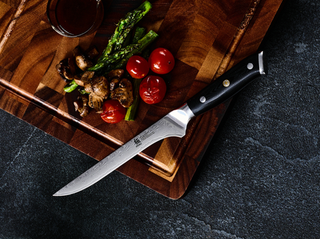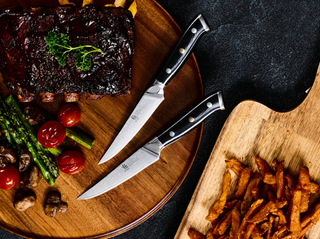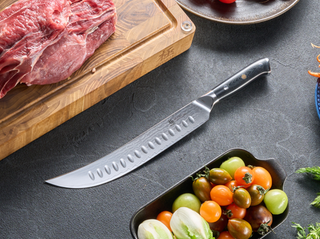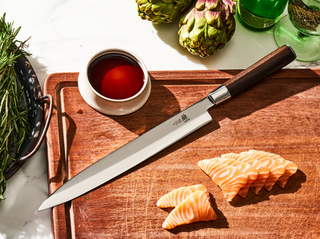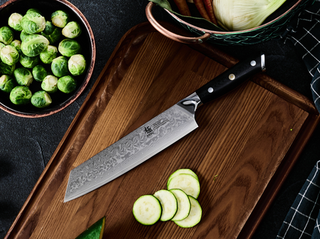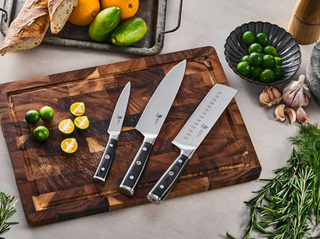When I first started cooking, I underestimated how a single vegetable would alter the texture and taste of a dish. Learning how to cut carrots the right way completely transformed my meals. Whether I need paper-thin slices for garnishes or thick chunks for roasting, choosing the right cut makes a big difference.
So, here is the rundown of the most practical carrot cuts to use in everyday cooking, and the knives to make it simple. Whatever you are cooking, be it a crisp stir-fry or a roasted dish, there is just the right cut of carrots. So, let’s get into it.
1. Cutting Carrots into Matchsticks
The matchstick cutting style is one of the most popular ways to cut carrots. The objective is to make cuts that are long, thin, impressive, and cook uniformly. To cut carrots into matchsticks:
- To begin, peel the carrots and trimming both ends.
- Then, cut the carrots into 2-3-inch segments.
- Next, slice each segment lengthwise into flat planks about 1/8 inch thick.
- Lastly, stack the planks and slice again lengthwise to create thin sticks—your matchsticks!
Cut this way, carrots cook very fast and go well with any food that requires some crunch yet has to be subtle, thus, they are a favorite in my kitchen.
Matchstick Cut Carrots are Best for:
- Stir fry (this is how I usually handle how to cut carrots for stir fry)
- Asian-style slaws
- Fresh spring rolls
- Bento boxes and lunch prep
These sticks cook up fast, enhance texture, and bring added color.
When such precision work is involved, my 7-inch Nakiri Knife comes in handy. Its sharp and nimble blade makes smooth, consistent cuts, and the well-balanced pakkawood handle always makes using it comfortable, even when preparing large quantities of delicate items like carrots.
2. Cutting Carrots for Salad
Cutting carrots for salads is all about slicing them in a way that maintains their texture, and there are many ways you can do so.
Throughout the years, I have used every cut: rounds, ribbons, shreds, but each cut provides the salad with a different texture.
These are 3 ways to cut a carrot for salad:
- Thin rounds: Slice carrots crosswise into even coins. Perfect for a subtle crunch in mixed greens.
- Ribbon-style: Use a vegetable peeler to create long, delicate strips. These add elegance to any salad.
- Grated carrots: Use a box grater or food processor for fine shreds that mix well into slaws and chopped salads.
Use These Cutting Methods When Cutting Salad For:
- Coleslaw
- Green and grain salads
- Sandwich wraps
I use the 7 Nakiri Knife Damascus Steel to get clean slices on the carrots that are not bruised. The blade is made out of high-carbon Damascus steel, and it is incredibly beautiful to look at, as well as cuts surgically precise. And the straight blade edge results in evenly cutting. Both when making a weekday lunch or a dinner party, this knife gives me confidence and control.
3. Cutting Carrots for Roasting
The secret to cutting carrots for roasting lies in slicing them into consistent portions so that they roast evenly. Follow these steps:
- First, peel the carrots and cut off the tips.
- Then slice them in half lengthwise if they’re thick.
- Thirdly, cut into rustic chunks, batons, or thick diagonal slices.
Best for:
- Roasted root vegetable medleys
- Honey-glazed carrots
- Sheet pan dinners
When I have to roast a big batch then I don’t want a dull blade making things harder. This is why I grab the 7” Nakiri Knife from Kyoku's Daimyo Series.
It's 440C stainless steel and razor-sharp 13-15 cutting edge allows me to slice smoothly with minimal effort. Moreover, the rosewood handle is comfortable in my hands, even when I have to prep for longer.
4. How to Cut Julienne Carrots
The Julienne cut is one of those cuts that looks fancy but is surprisingly doable with the right approach. Slightly slimmer than matchsticks, julienne cuts are ideal for presentation.
To cut julienne carrots:
- Start by cutting the carrot into 2-inch pieces.
- Then, slice each piece lengthwise into thin planks, about 1/8 inch thick.
- Finally, stack the planks and slice again into skinny, even sticks.
Best for:
- Slaws
- Vietnamese spring rolls
- Garnishing soups and rice dishes
The julienned carrots are not only attractive but also absorb flavours in sauces and marinades. If you are looking for a refresher course on the various knife cuts, consider reading our guides on how to slice onions like a pro.
How to Store Cut Carrots
One of my go-to time-saving tricks is chopping carrots in advance and storing them properly. Carrots cannot just be tossed into a bag and put in the fridge. You have to store them in a way that preserves their freshness and keeps them crunchy.
Also, the method you choose for storing your carrots depends on how long you intend to keep them.
Follow these steps:
For short-term storage (2-3 days):
- Place the cut carrots in a glass or plastic container.
- Fill the container with cold water until the carrots are submerged.
- Cover tightly and store in the fridge. Change the water daily to keep it crisp.
For long-term storage (up to a week):
- Wrap cut carrots in damp paper towels and store them in an airtight bag.
- You can also vacuum seal them for longer freshness.
- Want to freeze them? Blanch slices for 2-3 minutes, cool in ice water, then pack in freezer bags.
Finding the right method to store them will prevent wasting your preparations, and always have your carrots ready to cook.
So, ready to make every slice count? Whether preparing a meal or serving a fine dining dish, the proper technique can turn everything around, and so can the proper knife. Indulge in our range of chef-tested knives and understand firsthand what quality is all about.
Shop the best Nakiri knives here at KyokuKnives.
